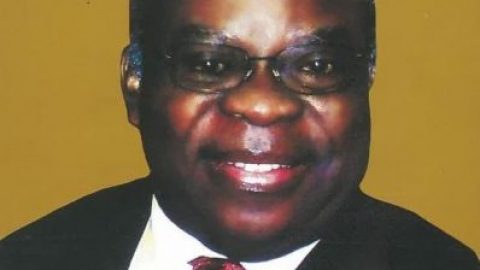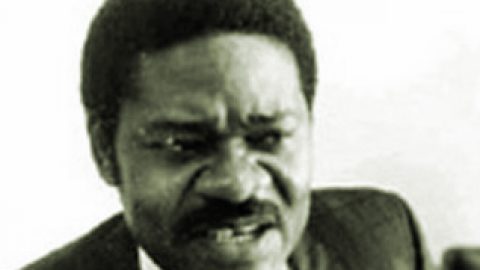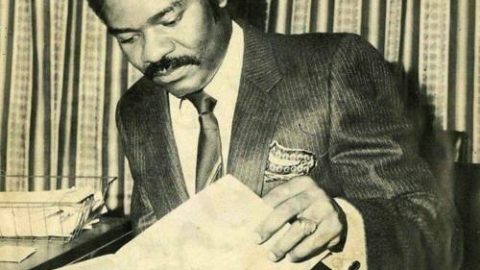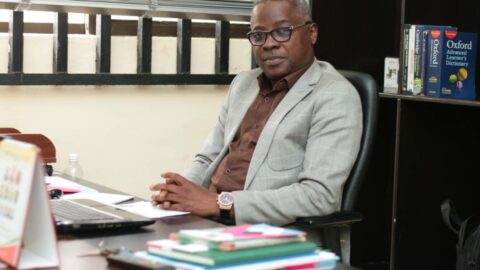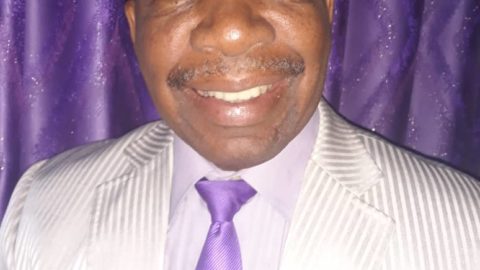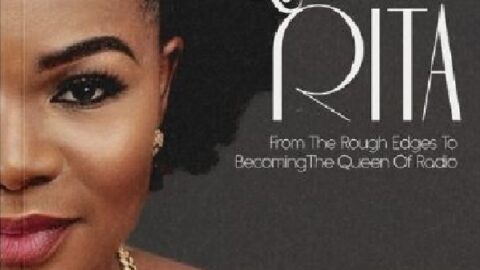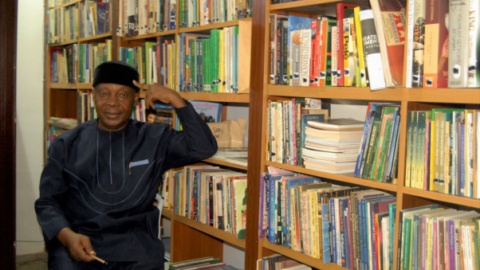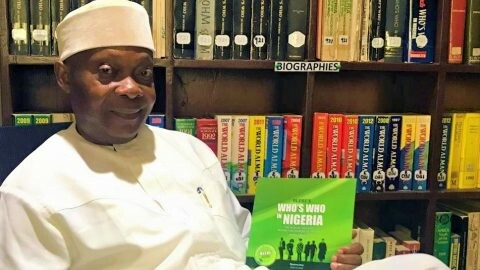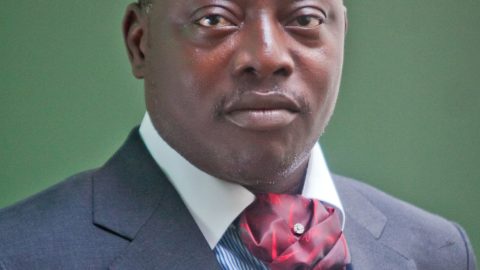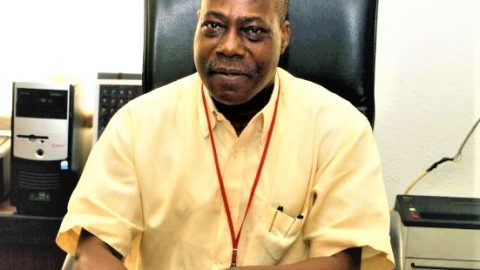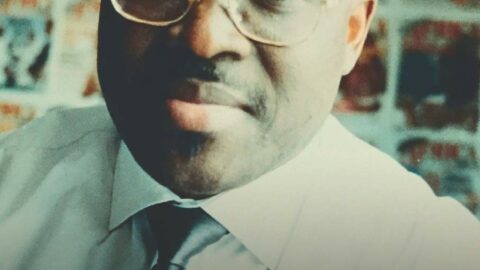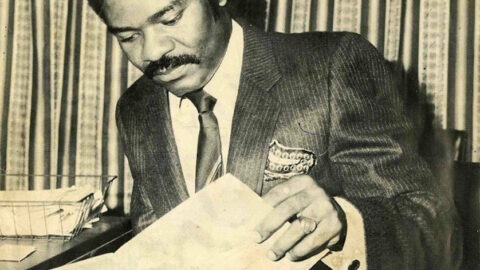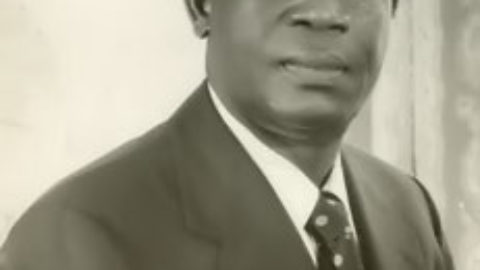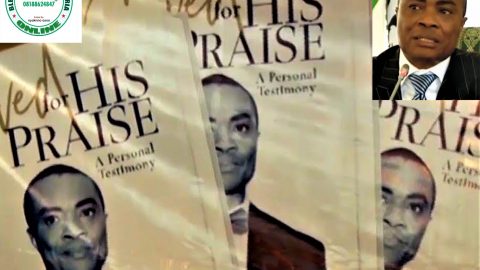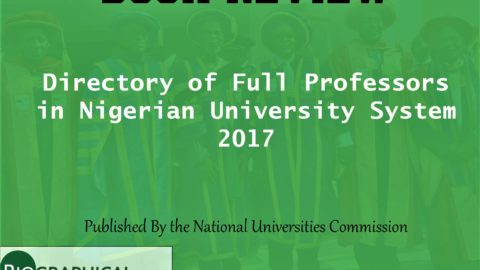A Review of Kayode Soyinka’s Book Born Into Journalism
BY SAM AKPE
For a few seconds, let’s put our minds in a reverse—exactly 34 years back. Imagine that it’s October 19, 1986. You are a journalist, sitting with your boss—who is also a close friend—inside his study; having breakfast; although it’s already past noon. There is a knock on the door. A well-sealed parcel has just been delivered at the gate by unknown persons. They gave it to your boss’ son who in turn brings it to the father. It comes with the instruction that no one else should open it except the addressee.
Your boss receives the parcel from his son. You can see the curiosity on his face. He gives it to you to examine. Both of you start guessing who sent it. It is a big, well padded envelope. Since the instruction is that he should open it by himself; and thinking that it contains documents that would give him exclusive stories, he places it on his laps; ignorant of the source—and the intent. Then, as he tears the envelope open—eager to know the contents—it simply explodes.
The blast is deafening. The entire room is shaken as though an earthquake has just happened. Books start falling over each other from the shelf. The mahogany breakfast table is violently tortured. The ceiling caves in. Your boss is flung off his seat—backward. Blood! Smoke! Fire! Confusion! You can hardly see and understand what’s happening around you.
Dazed beyond words, you find yourself lifted off the seat with such staggering force and slammed backward against the door to the study. The impact is deadly. Your brain goes dumb and numb. You start seeing stars—and even touching them. You could feel the approach of death. Human flesh fly in several directions as poisonous smoke chokes your lungs. A big ball of fire fills the room. All these happen within a split second!
Still in that state of shock and incapacitation, you start hearing voices as though in a dreamland. Some seconds later—although in your imagination, it is as if hours have passed—you figure that people are rushing into the room on a rescue mission. The atmosphere is chaotic. Your hearing is impaired. Your vision is blurred. The raw impact of the explosion is at work in you. You keep hearing that horrifying noise in your ears for the next five years.
In the melee that follows, your boss is carried—almost in pieces—to the hospital. He is in a bad shape. As a patient in the next room, you are gradually returning to reality when news filters in that he has passed on. The fear of death grips you. You start imagining: if you had his permission to open that parcel when he gave it to you, you could have been the one meant for the mortuary.
The dead man was Dele Giwa. The survivor is Sunday Oluwakayode Adedeji Soyinka—known simply as Kayode Soyinka. He saw death but refused to die. He has lived to tell the story 34 years later in a book entitled: Born Into Journalism—Memoir of a Newspaper Reporter. Not much detail of that incident is given in this book. Soyinka has promised to write a separate book on the bomb blast. Dele Giwa’s death was a horrifying experience for every Nigerian journalist—more so to Soyinka who saw it firsthand.
My original expectation, when I got a copy of this book, was to simply walk through other chapters and focus on Soyinka’s narrow escape from that bomb blast. I expected him to tell the full story. Somehow, though disappointed, I’m finding myself not glancing or walking through the book as envisaged. I’m not even reading it. I am mentally trapped: studying and enjoying each sentence and each paragraph of the book.
In his recall, Soyinka believes that the bomb that killed Dele Giwa was not intended to kill one person because it was too powerful; “it must have been packaged with the intention of wiping out anyone in the vicinity when it exploded. The intent was obviously so that no one would be alive to tell the story and give accurate account of how it happened.” Soyinka narrowly escaped but has refused to tell the full story—perhaps out of fear that the killers of Dele Giwa are still alive and could go after him.
After escaping the bomb blast, Soyinka was declared a security risk in Nigeria. He was placed under security surveillance. Informed military sources tipped him off. His return to UK was miraculous. In London, he was visited by Scotland Yard protective squad who put him through some self-security drills and survival tactics. He was assured of their protection. He spent the next eight years in self exile based on advice of friendly security agents in Nigeria.
Born Into Journalism is a story of Soyinka and his journalism exploit—from the beginning to the end. Of course, the end has not ended yet. It is a gripping tale of a quintessential reporter who grew on the job the traditional way. He did not just happen in journalism. Soyinka was nurtured within the family—the newsroom and the beats. He learnt the job by doing the job. Armed with his school certificate, a chance meeting with veteran journalist, Dayo Duyile, paved the way for the actualisation of what started as a passion.
The book opens with deep historical insight into the author’s background. He goes several generations backward to talk about his lineage. He sounds more like a family historian—quoting royal sources to confirm his narrative. His fraternal grandfather—an Ifa priest—refused to have his picture taken so that he won’t die young. Imagine that! Eventually, he died in 1960. His maternal grandfather—a teacher—taught Chief Obafemi Awolowo.
Lest I forget, Soyinka attended Baptist Boys High School previously attended by Chief Awolowo; President Olusegun Obasanjo; Chief M. K. O. Abiola; Professor Adeoye Lambo—former deputy director-general of the World Health Organisation; Bola Ajibola and Kehinde Sofola—both Senior Advocates of Nigeria and former Ministers of Justice; the list is endless.
At 18, in 1976, Soyinka was hired by the Sketch newspapers as a cub reporter. You know what I mean if I say he grew on the job. Since he had no experience whatsoever, he was assigned to understudy a senior correspondent who was in charge of the Judiciary. From the day he was employed at the Sketch, it took one full year for him to have a front page lead story in the paper. The book reveals the dramatic events that led to this.
Being a cub reporter means belonging to the last rung of the professional ladder. It was from here, that Soyinka started the upward climb. In journalism, the breakthrough usually comes through consistent hard work. One day, he was asked to cover a beat for his absent boss. He seized the opportunity and became a celebrated boy-reporter at the end.
The book reveals at every point what committed, professional journalists do to get exclusive stories. A typical example was when Soyinka was sent to cover the historic “Ali Must Go” protest of the late 70s across the country. His narrative is an exciting disclosure. It brings to view, the risks associated with journalism. The young reporter had to repeatedly crawl under the fence, hidden from the prying eyes of soldiers and the police personnel, to enter the premises of the University of Ibadan to scoop news of the protest.
His commitment to the job earned him quick recognition within the system. He was granted a scholarship for a diploma programme in journalism in London. But he had to sign a legal document sworn to in court to return and serve the company for at least four years after his training. While in London, he also served as Sketch’s foreign correspondent. It was the beginning of an endless sojourn in the United Kingdom.
Soyinka’s book is likely to resurrect old issues directly related to the crisis that rocked the Sketch over who should be the General Manager—Duyile or the revered Segun Osoba. The story of how Chief Osoba got the job and the consequences as they concerned Soyinka is quite interesting and in-depth.
What is however left hanging in the book is the expected disclosure on why his legally-binding scholarship, to study in London for two years, was stopped by Chief Osoba. With his salaries and allowances unpaid for six months, he was ordered to terminate his course and return to Nigeria. He refused. Instead, he fought back. In a daring, unmindful-of-whatever-consequence manner, he sent Osoba an unsavoury detailed response.
The book recalls the pains and frustrations “inflicted on me at a young age” by his employers at the Sketch. Then he adds, “I believe in his heart of hearts, he (Osoba) would know that he has wronged me…. I wish to use this medium to let Chief Osoba know that all is forgiven and I no longer hold any grudge against him… I still consider him as my boss.”
Throughout the book, in spite of his feelings, Soyinka keeps paying glowing tributes to Chief Osoba as one of the respected doyens of journalism in Nigeria, “I believe he is a giant in the profession and has many good points too. He is only human.” That’s the spirit—respect and forgiveness.
Earlier, he had received invitation to join the Concord newspaper. The book does not disclose who sent the message. But he followed up. Eventually, he resigned from the Sketch and crossed over to Concord newspaper. The book chronicles the efforts and processes involved in the registration and setting up of the Concord office in London. Still in his early 20s, Soyinka handled the assignment with unpredictable efficiency.
Each sentence and paragraph of this life story exposes notable attributes of a good biography. The tale is told in simple, clear language—no vague expressions. It flows like a song—authentic and even full of suspense. I could not drop the book or jump the pages the moment I started reading it. This is a story well told; but not without some minuses.
From Fleet Street, his academic credentials are in surplus. Soyinka holds a degree in International Relations from the United States International University, in California and a post-graduate degree in International Journalism from City University in the UK. He has been a visiting scholar at Wolfson College, Cambridge University. He is also a 21st Century Trust Fellow.
Despite his busy journalism schedule, Soyinka found time to write an important book: Diplomatic Baggage: MOSSAD & NIGERIA—The Dikko Story. The book is about the aborted but almost successful kidnapping of Nigeria’s former Transport Minister, Umaru Dikko, from the UK to Nigeria. It happened during the military regime Major General Muhammadu Buhari.
This book is not all about journalism. There is history and there is politics. For instance, Soyinka tells the story behind the free education programme in the western region of old; initiated by Chief Obafemi Awolowo. Historic and verifiable achievements of Awo as Premier of the Western Region are beautifully highlighted in a true journalism manner—no undue embellishments.
Beyond that, three times, Soyinka tried to be governor of Ogun State. Three times, he did not succeed. He even contested against Chief Osoba; and of course, the chief floored him. Later in his career, he turned down an offer to take over from the late Peter Ajayi as managing director. At this time, he had become the shining star of Newswatch magazine.
For the three years he worked at the Concord, Soyinka developed a sound personal relationship with the publisher, Chief M. K. O. Abiola. He was made the sole signatory to the company’s account in London. He also handled importation of spare parts and production materials needed by Concord in Nigeria.
But how and why this unique relationship went sour forms another inconclusive aspect of the book. Soyinka was personally sacked by Abiola when he refused a transfer to Nigeria. What led to the demand for his transfer from London to Lagos remains unknown or undisclosed. This happened a few days after Abiola attended his wedding in Lagos. The reason for that sack equally remains as mysterious as his previous unfriendliness with Chief Osoba.
Jobless, with a pregnant wife in a strange land—after using all his savings to buy a house—Soyinka was left in the cold. For the second time in about four years, he wondered what qualified him for such hardship. He tried to get a job but could not. In a loaded twist of fate, one of the persons who refused to offer him a job, ended up working for him later in life when he established his magazine—Africa Today.
Suddenly, a call came from Lagos. It was not just a call—there was something special about it. Instructions were given and followed. Few hours later, he was standing before a legend and one of Africa’s best journalists, Peter ‘Pan’ Enahoro. A job offer was made. It was received eagerly. It came as a promotion—editor in charge of Nigeria desk at Africa Now. His official designation was General Editor. Another chapter opened.
About a year later, Newswatch magazine came on stage. Soyinka could not resist the lure to join the assembly of journalism stars that constituted the original team of that magazine. He had worked with many of them at the Concord. The founders: Dele Giwa, Ray Ekpu and Yakubu Mohammed were shining stars at the Concord. Dan Agbese was editor of the New Nigerian newspapers. Though advised by Enahoro against the move, he had compelling reasons not to move. He was hired as London Bureau Chief of the magazine.
Before I forget, his marriage fits the cliché: love at first sight. He was a gate-crasher at Titilope’s birthday party—taken there by a friend, uninvited. As soon as he set his eyes on the charming young woman, his heart melted. When he was formally introduced to her, he instantly prophesied marriage. She simply smiled. Today, they have two married children and a grandchild. But he almost missed her because her father believed that journalists, like “lawyers and politicians, are liars, unreliable, and therefore, cannot and should not be trusted.”
Soyinka has eyes for details. In his description of M. K. O. Abiola and Dele Giwa, he gives an impression of someone with excellent mental-record keeping. He describes where Giwa used to buy his shirts, shoes, under wears; his kind of music—including the tracks; his coffee and champagne.
In 1995, Soyinka left the Newswatch magazine and started Africa Today—his personal vision. Africa Today came as a new African voice on the world stage. It was well planned. The first cover story was an interview with Nelson Mandella to celebrate his one year as South African President. It was a bang! After interviewing top politicians and diplomats around the world, his only regret is the refusal by General Yakubu Gowon to grant him an interview.
This is not a perfect autobiography. What a book to read! Almost 400 pages! This is a beautiful story by a great story teller: factual, authoritative and enthusiastic. It is the authentic recall of one man’s exploit in journalism in the last 44 years—from a cub reporter in Ibadan to a publisher on the world stage. This is the story of Kayode Soyinka.
SAM AKPE …is our CONSULTING REVIEW EDITOR.


